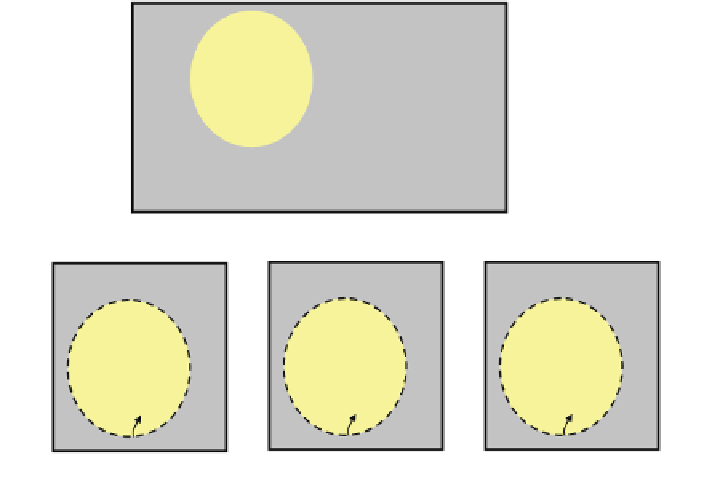Biomedical Engineering Reference
In-Depth Information
X
K
;
1
b
m
K
Þ
T
R
m
¼
Im
j
x
i
ð
Þ
x
i
M
m
ð
Þ
x
i
M
m
ð
ð
6
:
15
Þ
i
¼
1
where Imx
i
jð Þ¼
0, M
m
is the
mean value of the classified feature vectors x
ðÞ
in class m, and K is the total
number of the patient datasets. To decide the reference value to detect the irregular
breathing pattern, we combine the class means (
6.14
) and the covariance (
6.15
)
with the probability (
6.13
) for each class as follows:
ð
j
Þ¼
1ifx
i
is classified into class m; otherwise Imx
i
X
b
m
X
m
M
m
¼
M
P
P
¼
1
M
M
:
ð
6
:
16
Þ
b
m
m
m
;
m
¼
1
m
¼
1
With Eq. (
6.16
), we can make the threshold value (n
m
) to detect the irregular
breathing pattern in Eq. (
6.17
), as follows:
Þ
p
R
n
m
¼
m
m
m
ð
;
ð
6
:
17
Þ
L
m
where L
m
is the total number of breathing data in class m. For each patient i in
class m, we define P
m
as a subset of the patient whose score d
i
is within the
threshold value (n
m
) in class m and 1 - P
m
as a subset of the patient whose score
d
i
is greater than the threshold value (n
m
) in class m, as shown in Fig.
6.3
.
The digit ''1'' represents the entire patient set for class m in Fig.
6.3
. With
Fig.
6.3
we can detect the irregular breathing patterns in the given class m with the
P
1
Regular
(Yellow Area)
P
M
P
m
Irregular
(Gray Area)
< Class 1 >
< Class
m
>
< Class
M
>
P
1
P
m
P
M
ξ
m
ξ
M
ξ
1
1−
P
1
1−
P
m
1−
P
M
Fig. 6.3
Detection of regular/irregular patterns using the threshold value (n
m
)












Search WWH ::

Custom Search